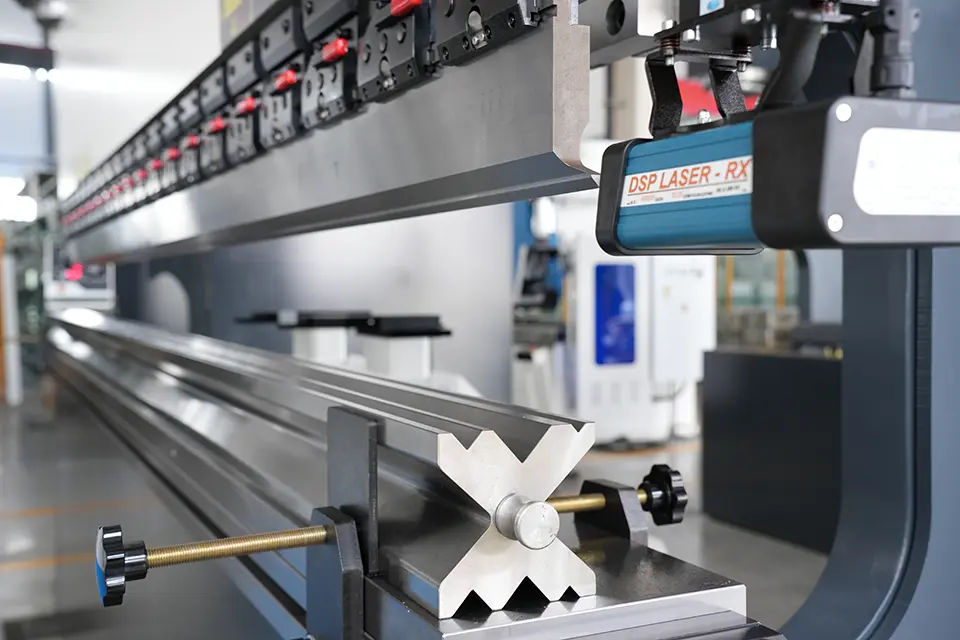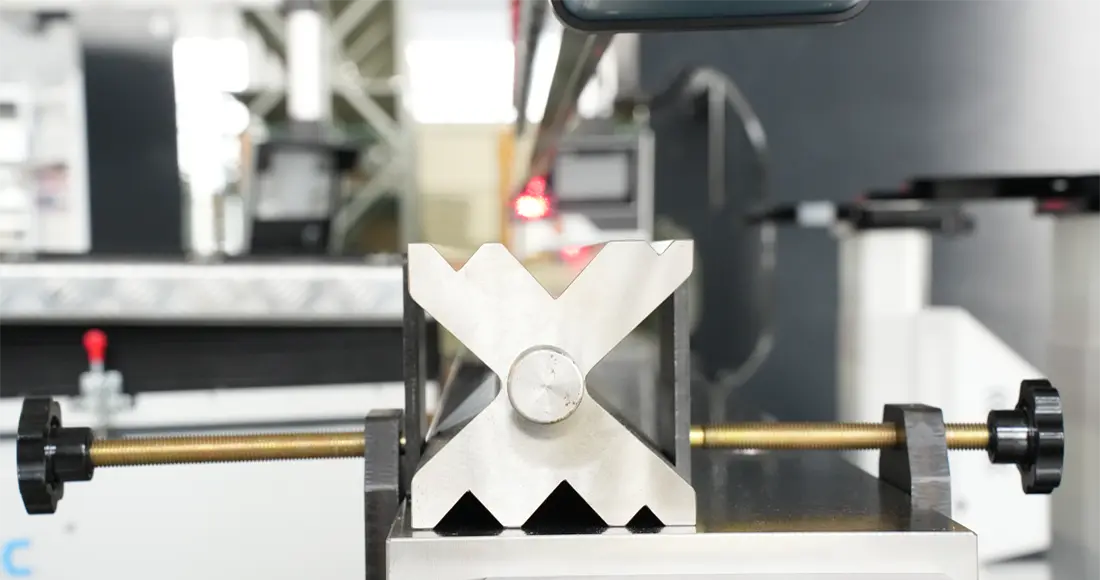Deciding between press brake and roll forming is a big choice that involves many considerations. Ultimately, the fabrication method you choose boils down to finding the most cost-effective way to achieve high-quality results.
Let's delve into the details of press braking and roll forming and explore some key factors you should ponder before settling on a sheet metal fabrication technique.
Understanding Press Braking
Press braking, also known as brake forming, is a metal shaping process that aligns sheet or plate metal along a specific axis. This is accomplished using a machine tool called a press brake, which clamps the metal piece between a punch and a die set to execute predetermined bends.
Press braking delivers precise metal bends for various types of parts. The process can generate a wide range of shapes, including common ones like a 90° rib form, V bottom, channel, closing, double form, hat channel, offset, open hat channel, and more.
Different types of press brakes include:
- Mechanical press brake: Designed to convert circular motion into linear motion.
- Pneumatic press brake: Utilizes air pressure to move the ram.
- Hydraulic press brake: Relies on hydraulic oil and a hydraulic pump as a power source.
- Servo-electric press brake: Employs a servo-motor to vertically move the ram.

To achieve faster and more precise bends in sheet metal, an increasing number of sheet metal manufacturers are turning to the KRRASS Hydraulic Press Brake.
Exploring Roll Forming
Roll forming is a metal bending technique that involves continuously rolling long strips of sheet metal to shape them into desired cross-sections. The strip of sheet metal passes through a set of rolls typically mounted on two stands.
Each set of rolls gradually contributes to the bending process until the desired profile is achieved.
Roll forming is a straightforward process capable of producing intricate shapes. It often serves as a cost-effective and flexible alternative to press braking and stamping.
Different types of roll forming machines include:
- Single duty roll forming machines: Employ strategically positioned rolls to work on a specific cross-section of the profile connected to each spindle.
- Standardized rolling machines: Feature easily accessible outbound supports and removable spindles.
- Side-by-side machines: Accommodate multiple profiles with various rolling tools.
- Double-headed machines: Incorporate two separate sets of rolling shafts and housings.
- Rafted machines: Have housings and spindle shafts with common rolling tools mounted on them.
4 Factors to Consider When Selecting a Fabrication Method
Before making a choice between press braking and roll forming, keep these four factors in mind:
1. Length
The length of your parts plays a crucial role in determining the appropriate fabrication method.
For longer parts, roll forming is the preferred option over press braking. This is because press braking struggles to handle the production of longer parts.
Press braking materials need to be split, sheeted, and cut to length before they can be processed on the press brake. On the other hand, long parts like slit coils can be directly fed into the roll forming line.
2. Metal Fabrication Design
Consider your fabrication design and the shapes you require before selecting a fabrication method. Press braking and roll forming follow different processes, and the time required for each process varies based on the complexity of the shapes you're bending.
Press braking, for example, can only handle a certain number of bends, with each bend requiring a separate operation. In contrast, roll forming can shape complex linear shapes in a single pass, reducing production time and costs.
3. Material Selection
Certain fabrication processes are better suited for specific materials. Your choice of material can optimize the fabrication process and potentially save you money.
Press braking and roll forming work well with lighter materials such as flat-rolled steel or high-strength low-alloy steel (HSLA). However, high-strength materials pose challenges for both press braking and roll forming.
4. Tooling Costs
Tooling costs are usually similar for both press braking and roll forming, and the price typically depends on the nature of your project.
Generally, when dealing with larger volumes, roll forming tends to have less expensive tooling costs per piece. On the other hand, if the volume is small, press brake tooling is likely the more cost-effective option.
KRRASS: the best choice for
all sheet metal processing manufacturers
When considering the overall costs of purchasing, maintaining, and operating a sheet metal equipment setup, a sheet metal fabrication service: KRRASS brand is your best choice. KRRASS has a tremendous reputation in the market due to its focus on consistency and quality at the most competitive price. Whether it's press brake or any other application equipment, our team of experts has the right combination of industry knowledge and the latest tool to provide you with the best products and services on the market. Moreover, we set ourselves apart with our advanced system that is completely online. Just let us know what your product needs, request a quote, and start the process.
Make a request and Get Started Today
Get Instant Quote
By carefully considering these factors, you can make an informed decision when choosing between press brake and roll forming as your preferred sheet metal fabrication method.
Learn more about our products, please visit and subscribe to our Youtube channel





